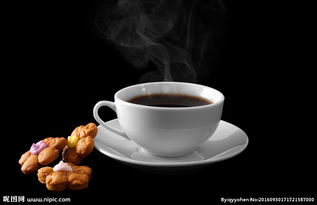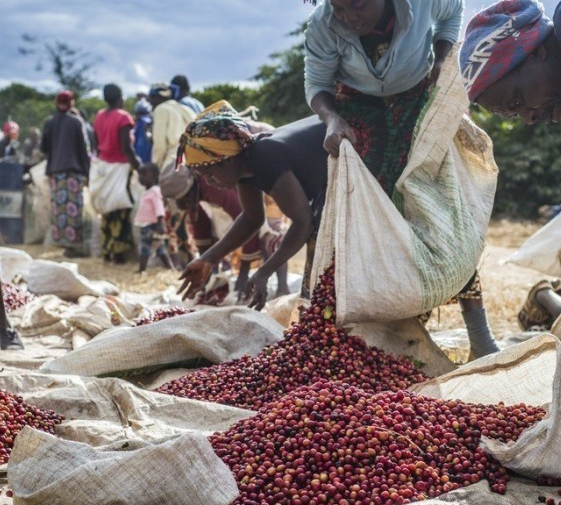Learn the knowledge of "double baking", "fire baking", "fire baking" and "Nordic baking"
"heavy baking", "fire baking", "fire baking", "Nordic baking"
Among these many baking methods, we have singled out "heavy baking", "fire baking" and "fire baking" for you.
Let's start with "heavy baking". Some people call it "second baking". Literally, we can explain clearly that when we bake beans for the first time, we use low heat to bake beans until the water is low and the color of the beans is low. Stop baking immediately (especially strongly here, the time to stop, not a random rule, but by the judgment of the beans, stop at the most appropriate time), the beans taken out You must go through a complete cold (usually as long as a day) and make sure that the "bean heart" is completely cold before continuing for a second baking.
However, you may wonder, why do you want to do "heavy baking (secondary baking)"? This can be divided into bean appearance and flavor products to show. Through "heavy baking (secondary baking)", the moisture of the beans can be removed first, avoiding the occurrence of uneven baking. in addition, in this way, the color of the beans will be more stable and consistent, if for the merchants who sell baked beans, it can make the baked beans more beautiful. But I think what should be more important is that through "heavy baking (secondary baking)", we can remove the smell, restrain the excessive aroma and flavor in some beans with different characteristics, and achieve a balance and stability in the taste.
Of course, most of us carry out "heavy roasting (secondary baking)" because of the later. However, we also know that the roasting time of raw coffee beans increases during the baking process, and the aroma compounds gradually disappear as they are produced, so it is even more important to learn how to combine the above characteristics and achieve a balance.
According to our own test, under all the same conditions, the coffee liquid extracted from the beans that have gone through "heavy baking (second baking)" shows a clear balance and balance in the taste, and there will be no "too much" unnecessary fragrance and too much prominent flavor, which is good for users who like the taste. There is no doubt that "heavy baking (secondary baking)" is the best way of baking. On the contrary, the coffee liquid extracted from beans that are not "double baked (secondary baking)" appears to be lively, full of vitality, and rich in bitterness and sweetness at the same time.
So, can we say which baking method is the best? no way! It can only be said that it depends on how you like to show it, and choose "the most suitable" your baking method.
In addition, "fire baking" is also regarded as "long-term baking", and the white point is "slow fire pie". This kind of baking method is handled properly and can be skillfully adjusted to increase bitterness. for some users who like bitter taste, through this way, you can also pick up the cherry trees. @ it's really a great blessing! But it should be especially fortified, which does not mean that beans baked by "fire baking" will not be sour, but "increase bitterness"!
Now that we mention "fire baking", we will also say "fire baking", that is, "fast fire pie" for short baking time. This baking method is operated properly, and it can also skillfully clean up the sour taste, remove the sour smell of unnecessary cooking, and leave the sweet and sour taste, but because the degree of baking is too high, it will be easier to bake unevenly or overcooked. However, these situations can still be solved through the consolidation of baking techniques.
Of course, you may see a different view from ours on some items, for which the difference between the "roaster" and the "baking method" is the main reason. However, all the statements of the above words were written after this fact, not just a theoretical consideration, but should not be explained to you here.
With regard to Nordic baking, it looks like power roasting, that is, "fire roasting" goes straight to the point, and there will be a few insistence on me, a roaster growing up in the so-called "third wave" of coffee. It's like refusing deep baking, hating beans associated with the second explosion, the shallower the better, and so on. But the problem of shallow baking is not only that the baking degree is set in an explosion (usually the time to drop beans can not be separated from the dense explosion or after), there are many other factors that are quite noteworthy, such as firepower change, total baking time, temperature and humidity, throttle control and so on. Although the sour and sweet shock of shallow baking (or very shallow baking), the beauty of sour and the charm of sweetness is a baking goal that attracts us, but it often brings uncomfortable acid at the same time, which usually comes from the fact that the above changes are not mastered well. as a result, the built-in acid degradation and development of chlorogenic acid, citric acid, malic acid and so on are incomplete, or the poor mastery of caramelization reaction and the incomplete Mena reaction lead to the feeling of sweet powder. These marginal baking methods are easy to screw up because of these troublesome chemical changes. As a result, long-term bean cultivation and cooked achievements have become the only solution.
According to the excerpt from the new version of coffee science, although Nordic roasting is a very shallow baking style, it is "shallow roasting without hurry or slow". The control of firepower is simply a big fire until before the explosion, reduce or turn off the fire to glide, so that the important stage of the explosion is not urgent and complete caramelization, Mena reaction, and the fire before the explosion with the fully open throttle, let the hot air play its due effect. As a result, even if the beans are dense or even before an explosion, the acid has its complete degradation time.
And the control of the total baking time, although the fire to the end, but the key point lies in the sharp reduction of the lower bean temperature, such as the original 180-200 degrees, the lower bean temperature is reduced to 150-160 degrees, this adjustment will make the total baking time a little longer. it is possible that the original 7-8 minutes to a burst point into 9-10 minutes to meet the arrival of a burst. You don't have to pick the brakes all the time like the temperature of the beans is too high (in fact, I didn't control it properly).
Another key, I think, is the time to turn off the fire or set it to a very small fire. I'm afraid it depends on the lock temperature parameters of the baker. in any case, there should be enough thrust to let the temperature rise slightly and slowly reach the target of the first explosion.
After practicing these key ideas, the cup test of the original baking method and the Nordic baking method, I don't know if it has a psychological effect, but there are some but key taste differences.

Important Notice :
前街咖啡 FrontStreet Coffee has moved to new addredd:
FrontStreet Coffee Address: 315,Donghua East Road,GuangZhou
Tel:020 38364473
- Prev

The difference in taste and taste between Flat White white coffee and American latte coffee
Professional baristas please follow the coffee workshop (Wechat official account cafe_style) do you remember the first time you went to Starbucks to order coffee? Okay, let's not talk about Starbucks today. When entering the chain coffee shop for the first time, look at the pile of coffee names and cupsize (what is
- Next

What is the Ethiopian Red Cherry Project? Altland Manor in the sun Yega Chuefei
Red Cherry Project about the Red Cherry Project OPERATION CHERRY RED said that many friends of the Red Cherry Project are no stranger to the name. So what kind of project is the Red Cherry Project? Maybe only a few people can tell. In Ethiopia, which is known as the birthplace of coffee, there is a large area of fine traditional coffee trees.
Related
- Beginners will see the "Coffee pull flower" guide!
- What is the difference between ice blog purified milk and ordinary milk coffee?
- Why is the Philippines the largest producer of crops in Liberia?
- For coffee extraction, should the fine powder be retained?
- How does extracted espresso fill pressed powder? How much strength does it take to press the powder?
- How to make jasmine cold extract coffee? Is the jasmine + latte good?
- Will this little toy really make the coffee taste better? How does Lily Drip affect coffee extraction?
- Will the action of slapping the filter cup also affect coffee extraction?
- What's the difference between powder-to-water ratio and powder-to-liquid ratio?
- What is the Ethiopian local species? What does it have to do with Heirloom native species?

